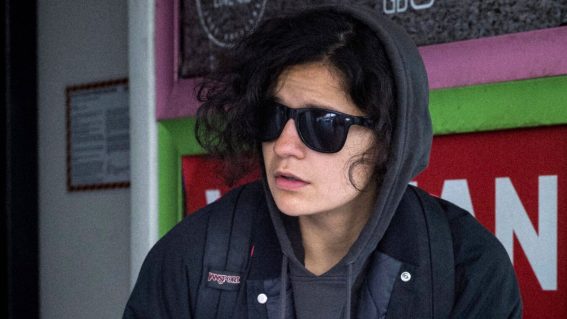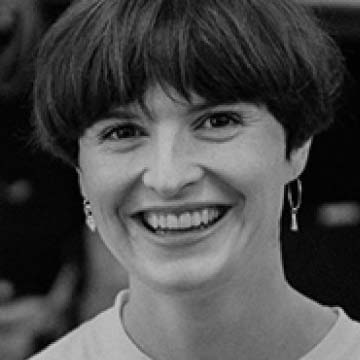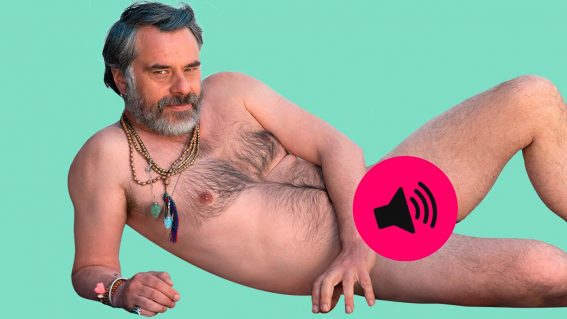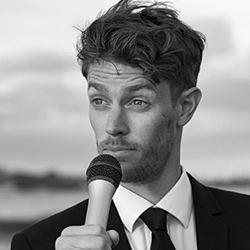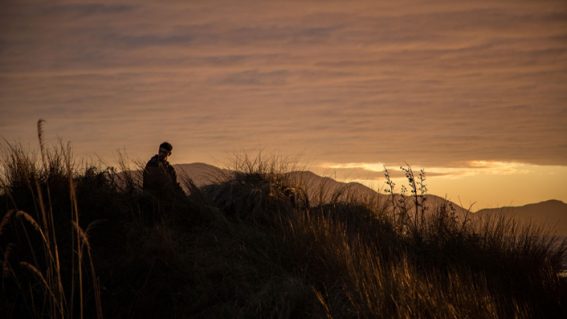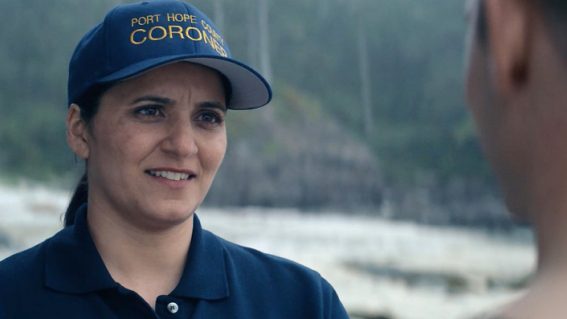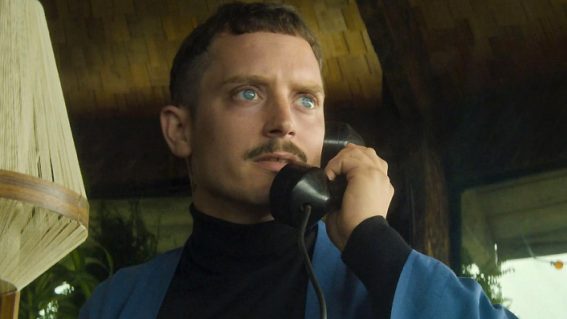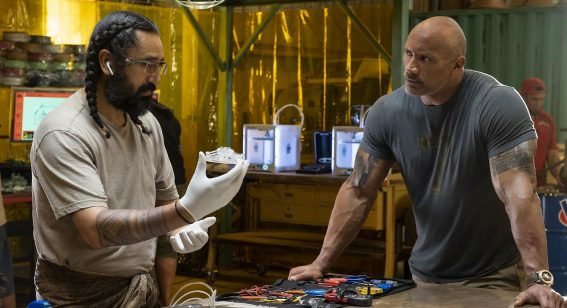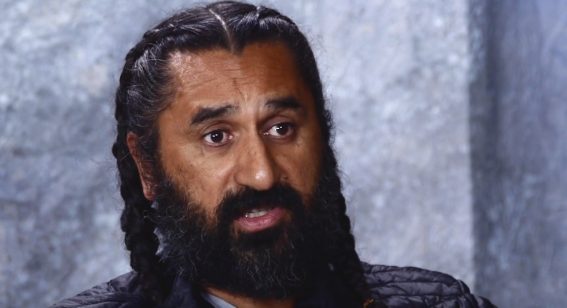How the filmmakers behind a new Samoan-NZ action comedy levelled up
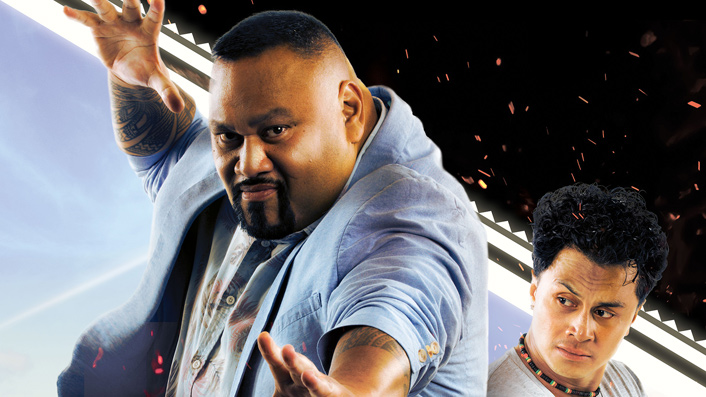
Flicks talks to Stallone Vaiaoga-Ioasa, writer-director of Samoan-New Zealand indie treasures Three Wise Cousins and Hibiscus & Ruthless, about his new action-comedy Take Home Pay.
Opening in NZ cinemas from 5th September, Take Home Pay follows Alama (Vito Vito) trying to catch his brother Popo (Longi Taulafo) who took his hard-earned money. To do this, he contacts his relative, aspiring private investigator Bob (Tofiga Fepulea’i), for help, though his “unconventional” approach to solve the case may hinder more than it helps.
Ahead of the film’s World Premiere at Auckland’s Civic Theatre 25th August (find tickets), Vaiaoga-Ioasa talks to Flicks about the socio-economic realities that inspired the story, getting the most out of an indie budget, and how they scored such prominent Samoan star power.
This interview has been edited for length and clarity.
Have you always wanted to make an action film?
Three Wise Cousins and Hibiscus & Ruthless were comedies but in a very contained manner. Sitting with audiences and seeing what they’re responding to had us thinking about what we could do next.
I love action films and it was more a case of: “What can we pull off with a small crew?” As soon as you step into the action genre, there are requirements that you need to fulfil to enjoy what’s on the screen, and so it was about asking: could we actually pull off a fight scene? A chase scene? Nothing was going to explode. Any chase scene was going to be on foot.
Our crew have definitely learned from our previous films and that was a good way for everyone to keep pushing, to keep improving. This film’s not the be-all and end-all. It’s part of a much longer journey and I thought, “This is the time to really challenge ourselves.”
Was there anything that turned out to be surprisingly easy for you to pull off in an action film?
Being able to move the camera a lot more helped make scenes much more dynamic. And we were making quick use of our crew in terms of our coverage.
Typically, you have action scenes with lots of angles, lots of different types of movements instead of just choosing that one shot and nailing that one shot. Knowing it’s not going to be an option for us helped us focus more on what stuff we really needed.
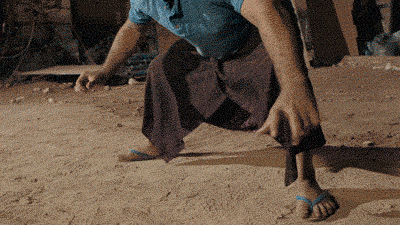
Approximately how much of this takes place in Aotearoa and how much in Samoa?
It’s about 35/65 split in the end. So 35% in Samoa. Most of it’s in Auckland. It was originally supposed to be all over New Zealand but then we looked at our budget and said, “Ah… yeah… Auckland.”
What inspired the story?
I wanted to look at the idea of money, especially in how money flows, often, within an island community.
The whole idea of ‘take home pay’ refers to remittances in general, but also the idea that whatever money you do take home, what actually happens to it. It’s always for the family, now. That gets divvied up and the pressure that puts on, I guess, young people. So that was the bigger thematic idea.
And then I realised, “No, that’s a bit too serious [laughter].” So we found a real simple story about: what if you choose not to give your money to the family? What would that young person do? Especially someone who’s from the islands who’d never been to New Zealand before, coming here?
It’s a whole new world, so much temptations. At what point do you say no to family and yes to your own personal, I guess, opportunity of discovery?
The minimum wage in Samoa is 2.00 tala (NZD 1.15). Compare that to the minimum wage here. That’s why seasonal work is so important.
I thought it was general knowledge, that a lot of people knew of the seasonal workers that come from the islands—not just from Samoa, from Vanuatu through to Samoa, Tonga, Cook Islands. When they come here, that’s money for the year. They’re earning more than enough and it really shifts their family in terms of socio-economic status.
Did you write this immediately after Hibiscus & Ruthless?
Yes, right after.
It was interesting seeing how different audiences reacted to Hibiscus & Ruthless. We went to American Samoa which had much more young people and old people. They loved it but it didn’t get as big of a response as, say, Three Wise Cousins.
Hawai’i had a lot more university people and they loved it. And it was really interesting for me that Hibiscus & Ruthless has much more, I guess, Kiwi-centric humour—a very different type of humour and writing compared to Three Wise Cousins.
It made me think about the balance. What did Three Wise Cousins have that made a lot of people laugh and what does Hibiscus & Ruthless have in terms of clinical writing?
Take Home Pay really pushed me to think much more visually rather than leaning on dialogue to push the story or push jokes.
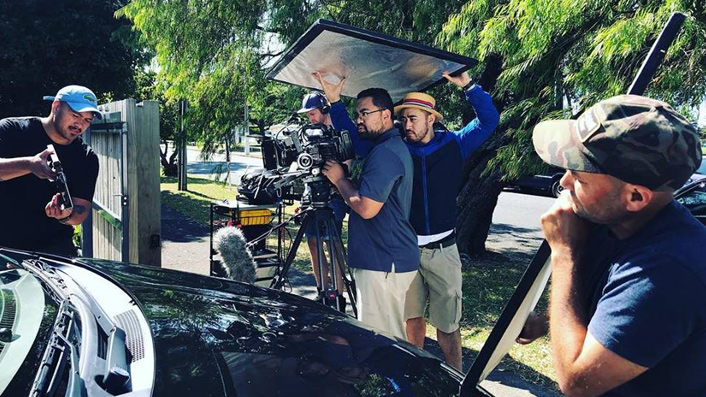
via: facebook.com/takehomepayfilm
With two films under your belt, did you find your general filmmaking workflow easier this time around?
Because we went for an action-comedy, and the action requires a lot more courage and a lot more dynamic moves in terms of camera and setup and locations, it was still a lot of hard work.
Our budget’s smaller than Hibiscus & Ruthless, despite the scope of the film being much larger. Our crew was a lot smaller—about six, seven people.
I think it felt easier in the sense that we weren’t as stretched, despite the workload still being quite heavy. It didn’t feel mentally stressful as such. We just knew, “Look, we know what we can do. We know that what we’re aiming for is achievable. We’re not hitting way above our weight to really compromise the story.”
You guys have been able to consistently deliver films for the last few years. Do you feel you’ve got a real sound structure in place to consistently do this? Or is it still quite an evolving process?
Writing is still the bottleneck as always for any sort of production. When I look at our pipeline, I definitely think we have the crew. Once that script is there, everything is pretty much a straight line, so to speak. And it’s the crew that we’ve come through from Three Wise Cousins and Hibiscus & Ruthless.
I can see everyone’s experience and skill has all levelled up—working towards Super Saiyan level. I think we have a really strong understanding of what a small crew can pull off and knowing when we need to pull in more people. The whole set up of an accordion crew, so to speak—go big when you need those extra hands and go small when you just need more mobility and to knock off more locations in a day.
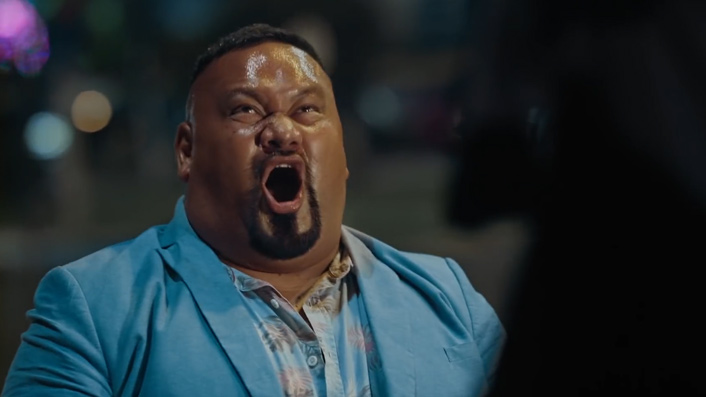
You have some notable star-power in Take Home Pay. Was this a case of you approaching them, or them coming to you?
Oh, we approached them. Everyone we asked said yes.
Even before the writing stage, we had a core idea of the film and we knew the main character, who he was going to be—it was going to be Tofiga Fepulea’i. He’s probably second to The Rock in terms of well-known Pacific Island entertainers.
When I called him up and told him about the film, I said, “Is acting even something you want to consider in a feature film?” And he was keen. And I go, “Okay, cool. I’ll write it up with you in mind and then you make the call whether you still want to be a part of it, once you’ve read the script.” And fortunately enough, he said yes.
It meant we had the heart of our cast and our story. Tofiga brings in a huge audience with him, not just in New Zealand but around the world.
It was very organic in terms of how it became really Samoa-centric. It felt like a blessing getting all these OGs of Samoan entertainment.
Cindy of Samoa, as soon as she’s onscreen, the older generation and the current just start smiling because she is that prominent. She’s that significant.
Having David Tua on there, he was awesome. He was really excited. I think people will be surprised by what he brings to the screen, as well.
I think in many ways, our track record helped give legitimacy to what we’ve been doing, and it made them keen. When they heard about the story, as well, they were quite open to it. If anything, I think everyone wants a spinoff [laughter].
What was the most memorable moment of filming?
Getting the St James as a location to film in. We were, at one point, racking our brains about a key location for a pivotal scene in the film, and when we saw the St James, we were like, “…can you film in there?” City council put us with the right people.
That particular location is caught between the old and the new and that fits really well with what Take Home Pay is about—young people caught between traditions and wanting to move on or improve.
Our crew walked in and were like, “Jeez, are we actually here?” It felt like we had levelled up, like everything was a lot more epic.


